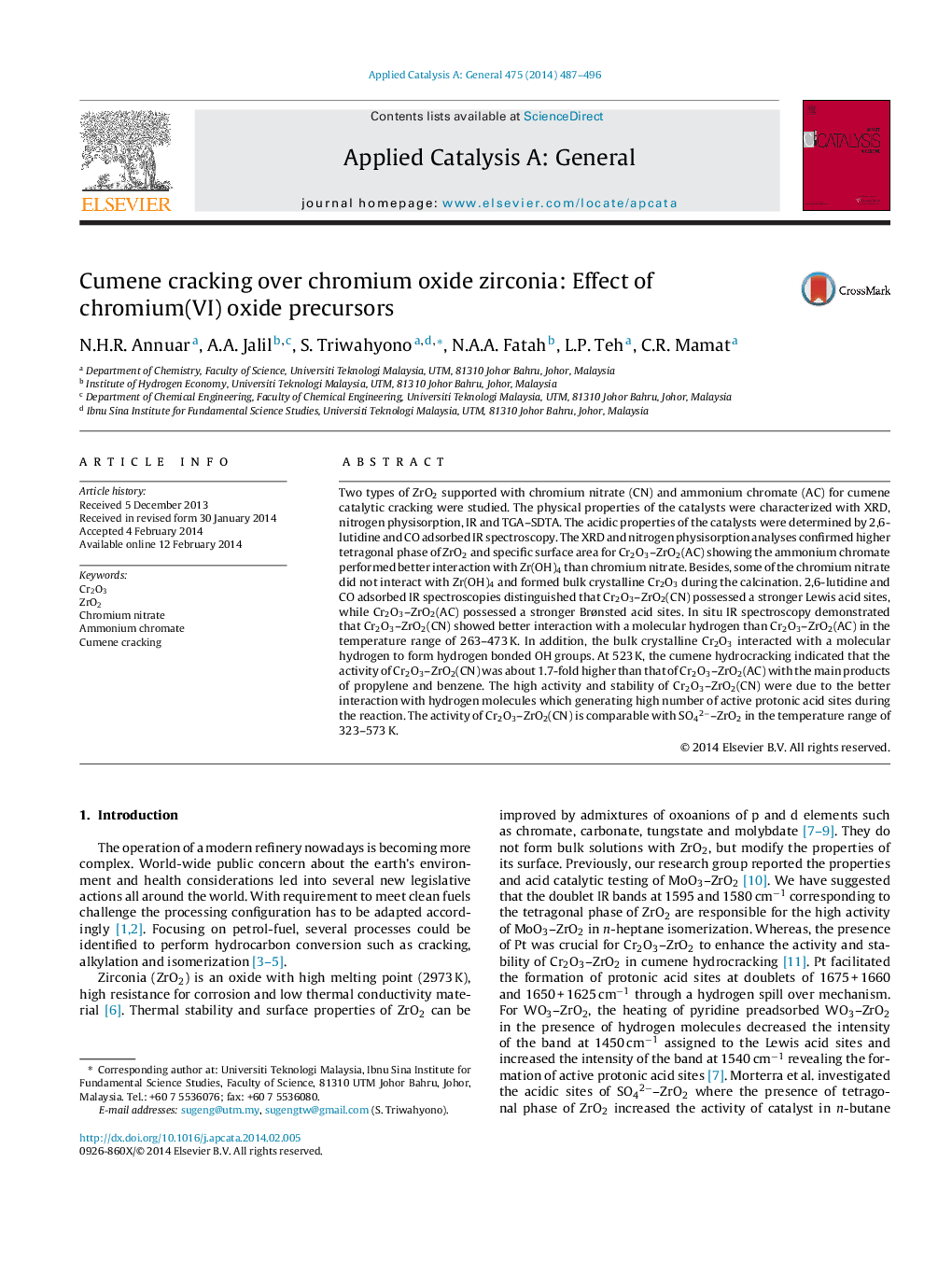| Article ID | Journal | Published Year | Pages | File Type |
|---|---|---|---|---|
| 39866 | Applied Catalysis A: General | 2014 | 10 Pages |
•Two Cr2O3–ZrO2 were prepared with ammonium chromate (AC) and chromium nitrate (CN).•Cr2O3–ZrO2(AC) possessed higher crystallinity and surface area than Cr2O3–ZrO2(CN).•AC generated strong Brønsted acid sites and CN generated strong Lewis acid sites.•Cr2O3–ZrO2(CN) exhibited better H2 interaction in the OH and Cr=O stretching regions.•The order of cumene cracking activity: Cr2O3–ZrO2(CN) ≈ SO42−–ZrO2 > Cr2O3–ZrO2(AC).
Two types of ZrO2 supported with chromium nitrate (CN) and ammonium chromate (AC) for cumene catalytic cracking were studied. The physical properties of the catalysts were characterized with XRD, nitrogen physisorption, IR and TGA–SDTA. The acidic properties of the catalysts were determined by 2,6-lutidine and CO adsorbed IR spectroscopy. The XRD and nitrogen physisorption analyses confirmed higher tetragonal phase of ZrO2 and specific surface area for Cr2O3–ZrO2(AC) showing the ammonium chromate performed better interaction with Zr(OH)4 than chromium nitrate. Besides, some of the chromium nitrate did not interact with Zr(OH)4 and formed bulk crystalline Cr2O3 during the calcination. 2,6-lutidine and CO adsorbed IR spectroscopies distinguished that Cr2O3–ZrO2(CN) possessed a stronger Lewis acid sites, while Cr2O3–ZrO2(AC) possessed a stronger Brønsted acid sites. In situ IR spectroscopy demonstrated that Cr2O3–ZrO2(CN) showed better interaction with a molecular hydrogen than Cr2O3–ZrO2(AC) in the temperature range of 263–473 K. In addition, the bulk crystalline Cr2O3 interacted with a molecular hydrogen to form hydrogen bonded OH groups. At 523 K, the cumene hydrocracking indicated that the activity of Cr2O3–ZrO2(CN) was about 1.7-fold higher than that of Cr2O3–ZrO2(AC) with the main products of propylene and benzene. The high activity and stability of Cr2O3–ZrO2(CN) were due to the better interaction with hydrogen molecules which generating high number of active protonic acid sites during the reaction. The activity of Cr2O3–ZrO2(CN) is comparable with SO42−–ZrO2 in the temperature range of 323–573 K.
Graphical abstractFigure optionsDownload full-size imageDownload high-quality image (253 K)Download as PowerPoint slide
